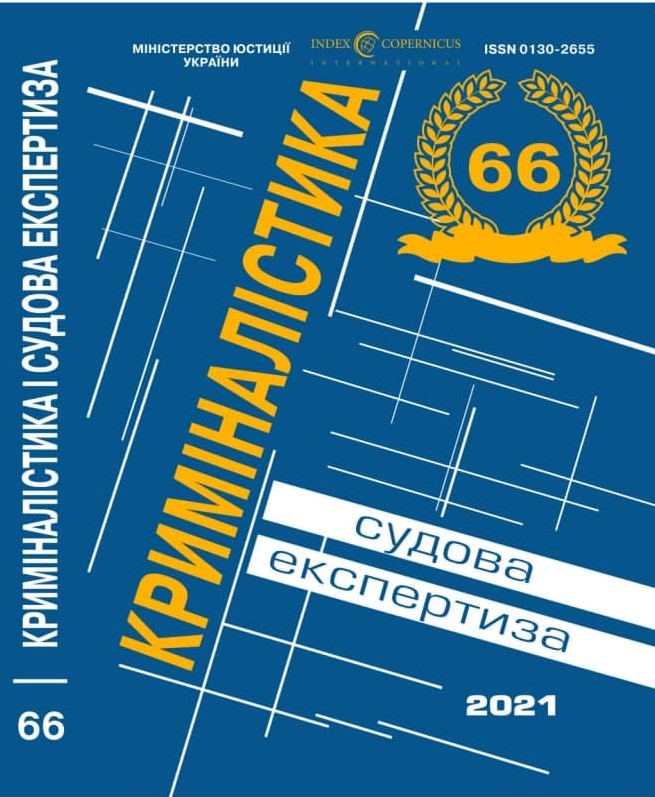
DOI: https://doi.org/10.33994/kndise.2021.66.68
D. Haidamakina, O. Drobysheva, V. Abrosymova, N. Syrotenko
Based on the analysis of the literature and expert practice on the study of letterless signatures, theoretical knowledge was systematized in relation to the study of this type of objects in order to solve identification problems, certain patterns and ways of forming letterless signatures were established, and the structure of the process of solving the identification problem was determined. The authors have proposed certain criteria by which one could testify about the stability of features in letterless signatures. Unlike handwritten notes, any signature is made not in order to convey certain thoughts to the reader, but in order to verify the identity of the writer, since the signature is a verification mark. When making handwritten notes, the writer tries to make letters and numbers in a form that would not cause the reader to doubt what words and numbers they represent. When executing the signature, the performer does not strive for such a goal and only wants to convince the reader that the signature was made by a specific person. These circumstances explain the wide distribution of signatures, which entirely or for the most part consist of letterless strokes. To clarify the nature of the graphic material contained in letterless signatures, it is essential to know the ways of its formation. First, most often letterless signatures are applied by simplifying letter signatures. The signature, first produced in letterform, is gradually simplified in the process of its frequent application, and the strokes lose its original appearance. The combinations of strokes, although they are random on the outside, however, according to the artist’s intention, correspond to certain letters and its combinations and can be interpreted by it. The second way to form letterless signatures is to deliberately complicate or simplify letters in the process of developing signatures, which leads to the impossibility of reading what is written. Additional ornate strokes are added to the letters, the letters are applied upside down, sometimes elements of different letters merge, forming monograms. This is usually done to make it more difficult to forge a signature. Thirdly, a letterless signature can be made by drawing strokes, which, according to the artist’s intention, do not correspond to any strokes of the letters. A peculiar kind of this way of forming a signature is imitation of the signature of another person bearing a different surname. In the process of analyzing the literature and expert practice, the authors of this article established that the study of letterless signatures can and should be based on the same basic principles as the study of handwritten records and letter signatures. It should be noted that the study of letterless signatures has a number of features, in particular, one should take into account not the transcription of signatures, but the composition, shape and mutual arrangement of strokes, that is, the general construction of signatures. When examining such objects, an expert encounters a difficulty, expressed in the absence of that unit, those elements of the signature, in relation to which it is possible to study particular features. Therefore, it is necessary to take into account a number of points that the authors mentioned in this work. In addition, the authors of the article drew attention to the peculiarities of the preparation by the investigator and the court of materials for the examination by letterless signatures.
Key words: letterless signatures, handwriting, identification problems, imitation signatures.










